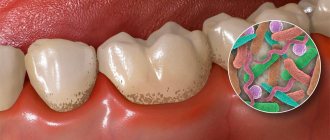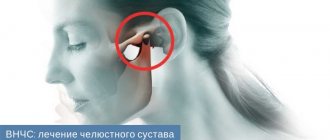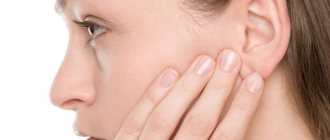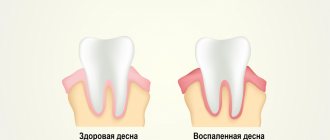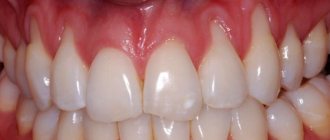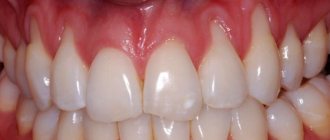The lymphatic system of the human body is considered one of the most complex. Lymph nodes are continuously in the process of producing microphages. It becomes a kind of barrier that protects a person from infections that enter the body naturally (for example, with diseases of the nasopharynx) or due to injuries to the skin.
If the human immune system fails to resist the development of pathogenic microflora, then a certain reaction is observed in the form of inflammation of the lymph nodes behind the ear. When a tumor forms in this area, it is quite easy to detect it by touch yourself. It is worth noting that an inflamed lesion can cause serious discomfort or not create any discomfort at all.
If we talk about what to do if the lymph node behind the ear is inflamed, then first of all it is necessary to determine the causes of the ailment. When there is a risk of infection spreading, such a condition can lead to quite serious consequences. In addition, you need to understand that lymph is responsible for the transfer of enzymes, many useful substances and the removal of bacteria. Therefore, problems with this zone need to be resolved as quickly as possible.
Why do the behind-the-ear lymph nodes become inflamed?
Let's start with the fact that the human body contains about 600 nodes of the lymphatic system, the size of each of them rarely exceeds 50 mm. Moreover, they can be of a wide variety of shapes (oval, circle, bean, etc.). Behind the ear, the lymph nodes run next to the vein. If a person is completely healthy, then these nodules cannot be felt by touch. If some compaction and inflammation are detected, serious problems may occur that require qualified assistance.
When experts note the reasons why the lymph node behind the ear in a child or adult is inflamed, they are most often identified against the background of the following conditions:
- Inflammatory diseases occurring in the ears. Most often, such ailments include otitis media.
- Development of inflammation in the human oropharynx. If an adult or child has an inflamed lymph node behind the ear, then there is a possibility that the patient is suffering from laryngitis, pharyngitis, sore throat or stomatitis. Pulpitis and even ordinary caries also lead to similar symptoms.
- Fungal infections that affect the scalp. As a rule, with such pathologies, a person suffers from severe itching and hair loss.
- Seasonal colds.
- Infectious diseases. These include rubella, chickenpox, and mumps.
- Purulent rashes that were caused by the activity of streptococci.
- Neuritis, if the doctor has diagnosed inflammatory processes affecting the peripheral nerves, which are located directly in the human ear.
As a rule, with such pathologies, the lymph nodes are enlarged, but do not hurt or suppurate. Usually, once the cause of the swelling is eliminated, the symptoms completely disappear. However, if a person experiences severe pain and notes that the lymph nodes are very hot, then it is highly likely that the patient is suffering from purulent processes.
Atheroma or cyst of the sebaceous gland in the postauricular area
Atheroma is a cyst filled with dead skin cells and sebum.
Behind the ears there are countless sebaceous glands, so it is in this area that atheromas are found very often. However, atheromas can often be found in the ear canal itself.
Rice. 2. Suppurating atheroma behind the ear
Although atheromas do not become malignant (such cases are described extremely rarely), they can become complicated. First of all, atheroma, in the absence of timely treatment, can become infected. When infected, the atheroma becomes inflamed.
If the atheroma is located in the genital area, then when it becomes inflamed, pain may occur during urination and sexual intercourse.
If there is pus
In such situations we are talking about lymphadenitis. In this case, patients note that they not only have an enlarged lymph node behind the ear, but also a noticeable increase in body temperature (up to 38 degrees or more). This leads to poor appetite, severe headaches and general weakness. In more advanced cases, noticeable ulcers appear around the lymph nodes.
As a rule, such symptoms are observed when the body is exposed to opportunistic bacteria and even some types of intracellular parasites. Lymphadenitis develops due to streptococci, staphylococci, chlamydia, E. coli, etc.
If a child has an inflamed lymph node behind the ear and at the same time has a fever, then you should immediately contact a specialist. Such illnesses at a young age can lead to quite serious complications in adulthood, so you shouldn’t take the risk.
Why do atheromas appear behind the ears?
Research into the mechanism of atheroma formation is still ongoing.
Today it is known that the epidermis (the surface layer of the skin) consists of layers of cells that constantly peel off from the surface during the process of growth. In the case when skin cells stop exfoliating and, accumulating and multiplying, begin to move into the tissues - a cyst wall is formed - atheroma. Inside the formed cavity, dead skin cells rich in proteins - keratin, and sebum accumulate. This is how atheroma is formed.
On the surface of the atheroma you can always find an enlarged pore through which the cyst can drain. In this case, we may notice yellowish masses with an unpleasant odor of decomposing sebum.
Other cysts, called epidermal, are very similar in appearance to atheromas. However, epidermal cysts are formed from sweat glands and their contents are very different in composition from the contents of atheromas.
Symptoms of lymphadenitis
At a more advanced stage of the disease, the patient additionally begins to complain of:
- frequent headaches and a sharp deterioration in general health;
- very high fever;
- problems with sleep and appetite;
- stuffiness and pain in the ear.
This pathology is difficult to confuse with other ailments. Self-medication should only be done after visiting a doctor and only if there is no pus coming out of the ear. Otherwise, there is a risk of the situation leading to an abscess. If the inflammation reaches the membrane of the brain, then there is a danger of the most tragic outcome. In addition, the blood flow very quickly begins to spread the infection throughout the body. Against this background, the functionality of the most important systems or organs may be disrupted.
Sometimes an inflamed lymph node behind the ear becomes a consequence of respiratory diseases, otitis media or flu. In this case, it is necessary to cure the primary ailment. After this, the lymph nodes will return to normal on their own. In some cases, you can get by with traditional medicine recipes. However, if we are talking about a more advanced stage, in which pus forms, then most likely the doctor will prescribe a course of antibiotics. Additionally, experts often recommend taking general restorative medications and anti-inflammatory drugs.
It is worth noting that if a child has an inflamed lymph node behind the ear, then there is no need to panic too much. Such ailments are most often diagnosed in children. The main thing is to know how to properly treat this pathology.
Diagnostics
Consultation with an otolaryngologist is necessary first of all to exclude ear, nose and throat diseases. If necessary, the doctor will refer the patient to specialists.
At your appointment, the ENT doctor will conduct a survey and examine the lump. To collect anamnesis, the doctor will check whether there is pain when pressing, whether there have been infectious diseases. In addition, he will take into account whether the bump behind the ear is soft or hard, whether it is pedunculated or tightly adjacent.
Next, the doctor will order a blood test to diagnose inflammation. To determine the cause of the tumor, an ultrasound or x-ray is performed.
Features of treatment
Deciding what to do if the lymph node behind the ear is inflamed is best left to your doctor. Treatment can vary greatly depending on what stage the disease is at, whether pus is present, etc. Based on this, the specialist may prescribe:
- Antibacterial drugs (cephalosporins or penicillins). Such remedies help to quickly relieve inflammation and eliminate infection.
- Antiallergic drugs. Thanks to the drugs in this group, it is possible to quickly relieve swelling and reduce inflammation.
- Painkillers. Such remedies are prescribed in situations where the behind-the-ear lymph nodes are severely inflamed and cause acute pain.
- Vitamin complexes and immunomodulating agents. Helps improve the protective function of the human body. Particular attention should be paid to vitamin C. It helps the body resist infectious diseases. This vitamin also speeds up recovery.
When deciding what to do if the lymph node behind the ear is inflamed, the specialist can also prescribe physiotherapeutic procedures. These primarily include UHF and electrophoresis.
If serious purulent formations are detected, surgical intervention may be required. In such situations, it is necessary to cut the lymph node and clear it of the resulting masses. For this, a special antiseptic solution is used. After this, the lymph node is sutured, but for several days a drainage is inserted into the incision, which is necessary to remove residual purulent masses, as well as effusion. However, the doctor decides to resort to surgical intervention only if conservative treatment methods have proven completely ineffective.
When deciding what to do if the lymph node behind the ear is inflamed, many give preference to traditional medicine. However, it must be remembered that such therapy is allowed only if it complements standard treatment with medications prescribed by a doctor. You should not use only unconventional methods. There are several options for how to treat lymph nodes at home. Let's look at them one by one.
Symptoms and signs of atheroma
Many patients, having atheromas behind the ears, do not even pay attention to them. However, sometimes atheromas become a serious concern.
It is worth paying attention to the following signs indicating the need to seek medical help:
- There is a small round ball under the skin;
- There is redness, swelling, thickening;
- There are signs of inflammation and infection;
- On the surface of the atheroma there is a small pinhole closed with a black plug;
- It is possible to extract thick yellow contents with an unpleasant odor from the atheroma.
You should consult a doctor immediately if the atheroma:
- Suddenly it began to grow quickly;
- Suddenly burst;
- Inflamed;
- It became sharply painful.
Nettle
A medicinal infusion can be prepared from this herb. To do this, just take a spoonful of dried nettle leaves, chop them and pour 250 ml of boiling water. After this, the liquid is brought to a boil and infused for about 15 minutes. When the infusion has cooled a little, you can strain it and drink half a glass before breakfast, lunch and dinner.
If we are talking about treating a lymph node behind the ear in a child, then the child may not like the rather specific taste of the medicine. To remedy the situation, some add a little natural honey to the liquid. However, doctors do not recommend giving nettle to children. If we are talking about a child, then it is better for him to prepare the following medicine.
Removal of atheromas behind the ears.
Atheroma behind the ear can be removed in two ways:
- Laser;
- With a scalpel.
With traditional removal with a scalpel, after injection anesthesia, a skin incision is made to expose the atheroma. Then the cyst is removed along with its contents. The skin wound is sutured.
Rice. 3. Bursting atheroma behind the ear
It is clear that when working with a scalpel, a scar is left on the skin, comparable in size to the atheroma itself, and sometimes larger.
Laser technologies make it possible to remove atheroma entirely without a single drop of blood from a small puncture in the skin, which allows for the best possible cosmetic result.
Oat milk
To prepare this homemade remedy, you need to buy 1 liter of enough fat milk and prepare a handful of oatmeal. After this, the liquid is brought to a boil and oats are added to it. The heat must be reduced and the medicinal decoction kept on the stove for 35-40 minutes. After this, the liquid cools slightly and is poured into glasses. You can add a spoonful of honey to each of them. Children (depending on age) should be given half or a third of a glass three times a day. For adults, the dose increases.
Aloe
To prepare the medicine, a plant that is at least two years old is suitable. The lower leaves of aloe are used. After grinding, about 150 ml of juice can be squeezed out of them.
The resulting liquid is poured into a glass of natural honey. After this, 2 incomplete glasses of Cahors are added to it. The resulting medicine is infused for 5 days in a dark and fairly cool place. After this time, it is recommended to drink the tincture one tablespoon before meals.
This product is allowed to be given to children, but only over 6 years of age. Do not forget that the drug contains alcohol, so you should exercise caution or avoid such treatment altogether.
Prevention of pathology
To avoid inflammation of the lymph node under the ear, be careful about your health:
- carry out timely sanitation of the oral cavity,
- don't get too cold,
- strengthen the immune system,
- take vitamins.
The human lymphatic system needs care and attention no less than any other organ. By taking timely measures to improve its health, you can regain lost health.
I write articles in various areas that, to one degree or another, affect such a disease as edema.
Celandine
Using this herb you can also prepare medicinal compresses. To do this, you need to collect several tops of celandine, wash and pass through a meat grinder or blender. The resulting slurry is mixed with the same volume of medical alcohol and left in a dark place for 1 hour.
After this, you need to cut off a small piece of gauze, moisten it in hot water and dip it in the prepared infusion. Next, a thin tissue is applied to the affected area, where the greatest inflammation of the lymph node is observed. The top of the gauze is covered with a piece of cellophane and warm woolen cloth. You must walk with the compress for at least five hours. Therefore, it is better to cook it overnight and remove it in the morning.
Is it dangerous to heat the lymph nodes?
Some traditional medicine recipes involve heating the inflamed area. However, doctors strongly recommend not to carry out such procedures if pus begins to accumulate in the lymph nodes, especially if we are talking about small children. The fact is that warming procedures provoke even greater inflammation. Against this background, the infection begins to spread faster throughout the human body, which is why his condition only worsens. In the most severe cases, blood poisoning occurs.
However, at the initial stage, warming procedures are permitted. Inflamed nodes can be covered with a woolen scarf.
